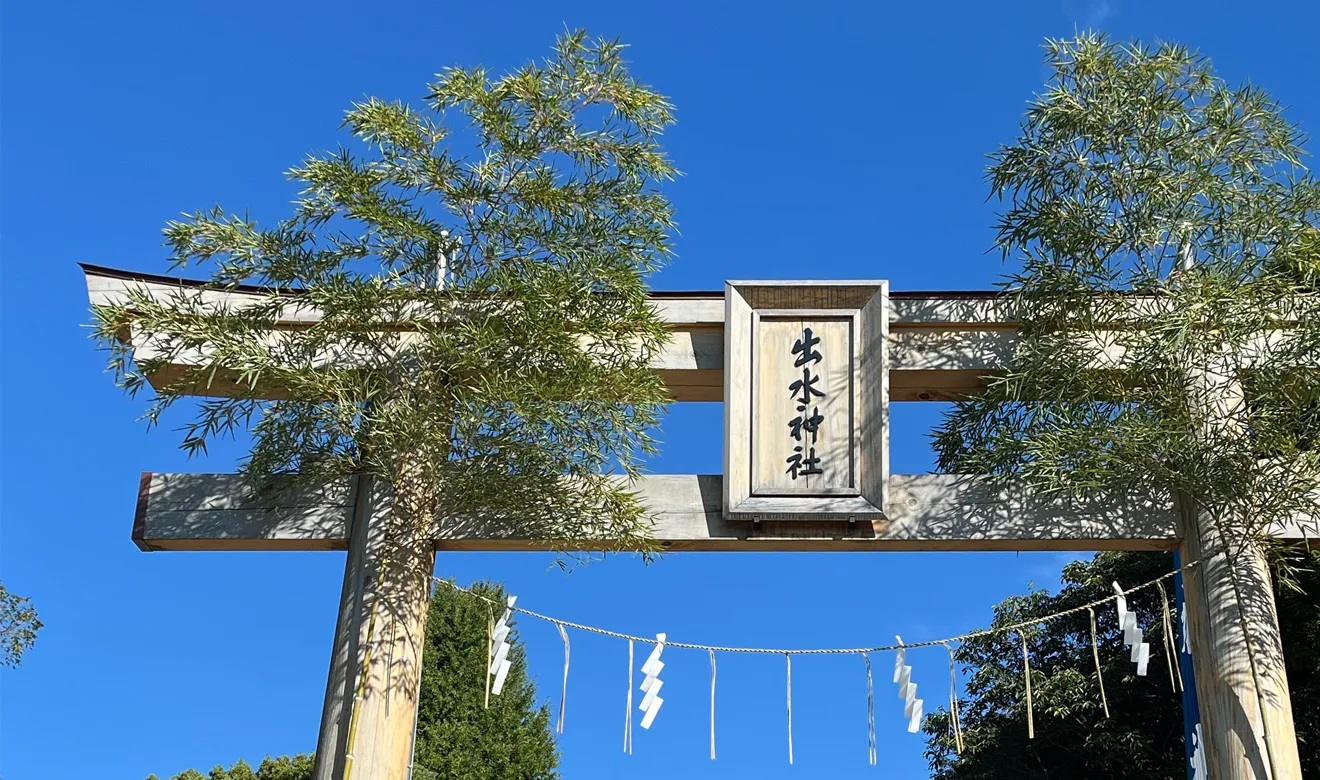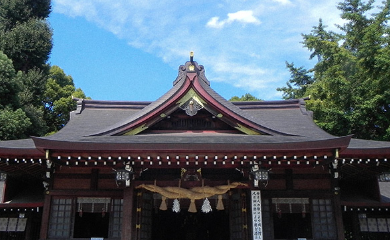
About Izumi Shrine
Clear water and quiet prayer,
a place of healing where history breathes.

Symbols of Kumamoto's Protection and Development
At Izumi Shrine, the first, second, third and eighth heads of the Higo Hosokawa family – Fujitaka, Tadaoki, Tadatoshi and Shigetada – are enshrined as the main deities. In total, 15 deities including the historical daimyo and Tama (Lady Gracia) are enshrined together. As Kumamoto's guardian deities, and deities of industry, literature and military arts, they are thought to answer prayers for good health, business prosperity and success in academic studies.
History and Foundation
The castle town of Kumamoto was burned to the ground in 1877 during the Satsuma Rebellion. Izumi Shrine was subsequently established on the grounds of Suizenji Jōjuen, which has deep ties to the Hosokawa family, at the wish of the family’s former retainers. They sought to enshrine the spirits of their lords and repay them for their benevolence. Through the blessings of their former lords, they also hoped to unify and bring peace to the hearts and minds of the people who were devastated by the conflict, and to promote the revitalisation of Kumamoto through the development of the town and its people.
Overcoming Hardships
Much of the shrine burned down during the Second World War, but the sacred storehouse and dance hall (kagura-den) were relocated to the former shrine grounds and a temporary shrine building was established. Reconstruction began in 1970, and the current main shrine building was completed in 1973.
The History of the Hosokawa Family
The Higo Hosokawa family have their roots in the Seiwa Genji – one of the most powerful and prestigious lineages in medieval Japan. Their original patriarch was Hosokawa Yoriari (1332–1391), the younger brother of Hosokawa Yoriyuki, who served in a high-ranking position within the Ashikaga shogunate. Lords Fujitaka, Tadaoki and Tadatoshi – the first, second and third heads of the family – all excelled in waka poetry, tea ceremony and Noh, and the 8th head Lord Shigekata was widely praised as a wise and benevolent ruler. Shigekata also contributed to education and medical science in Kumamoto, having established a han school (Jishūkan) and amedical school (Saishunkan).

